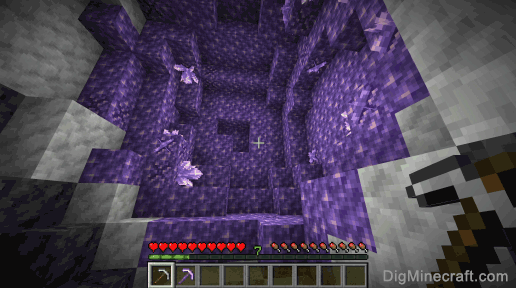

It is formed inside igneous volcanic rocks called basalts, which are created by volcanic lava. Just like other geodes, Amethyst requires a hollow space in which a crystal cavity can form. The first key "ingredient" is a hollow rock. It is a formation of a hexagonal crystal system that can be found in large cavities and smaller rock look-alikes called geodes.īecause they are thousands of years old, sometimes even prehistoric, Amethyst geode formation carries energetic information that spans all of those years.Īmethyst is a result of three key factors working together. What makes it unique is its distinctive purple color. About Amethyst GeodesĪmethyst geodes belong to the family of Quartz crystals and they are typically found in North, South, and Central America, with Brazil being one of the most famous homes of Amethyst mines. A study posted on Science Direct implies that even gas reservoirs in simple volcanic rocks are a result of more complex chemical processes than we thought.Īmethyst geode formation is pretty magical, and if it has sparked your attention, read on to discover how Amethyst forms. The very process of formation is a long and complex one. We can easily say that Amethyst volcanic geodes represent some of the most beautiful and most complex gifts of nature. You'll be in awe of how amazing Mother Nature is and why owning an Amethyst Geode is so special.Īmethyst is one of the most popular healing gemstones in the spiritual community (and it's certainly our favorite). So if you're looking for a fun hobby, geode hunting might help to explore nature more deeply.INSIDE: Discover how Amethyst forms so you can better understand just how incredible these little (and often big) gems are. These geodes often have striking colors and patterns on their surface and can sell for hundreds or even thousands of dollars apiece! Other valuable geodes can be found in Brazil, Mexico, Romania, Kazakhstan, India, China, and Namibia. Some of the most valuable geodes come from Morocco. Geodes can also be found all over the world, including North America, South America, Europe, Asia, Africa, and Australia.

However, they are most commonly found in sedimentary rocks like shale and limestone. Geodes can form in many places including volcanoes, deserts, mountainsides/hills, and even under the ocean. The price will vary widely based on whether the rock has been cut open because geodes often contain crystals inside of them which make them more valuable when exposed correctly (e.g., cutting along an axis).

What is a geode worth? A geode can be worth anywhere from $5 to more than $1000, depending on its type and location. It's also important to note that geode rocks are not worth money if they're just lying around outside with no special features! Most people who find geodes keep them as souvenirs rather than selling them for profit. However, in general, geodes are not worth very much money. Some geodes are more valuable than others because they are rarer or have special features. The answer to this question depends on the type of geode and its location. They can be made of many different types of materials, including quartz, agate, and calcite. Geodes can be any size, but they typically range from just a few inches to several feet in diameter. They get their name from the geode, which is a small cavity or hollow space inside the rock. Geode rocks are a type of rock that is found in nature. So if you're curious about geode rocks, keep reading! We'll also take a look at where geodes can be found and some of the most valuable ones out there. But what are geode rocks worth? Are they worth money? In this blog post, we will explore the answers to these questions. Have you ever found a geode when you're out exploring nature? These beautiful rocks are fascinating to look at and even more fun to find.


 0 kommentar(er)
0 kommentar(er)
